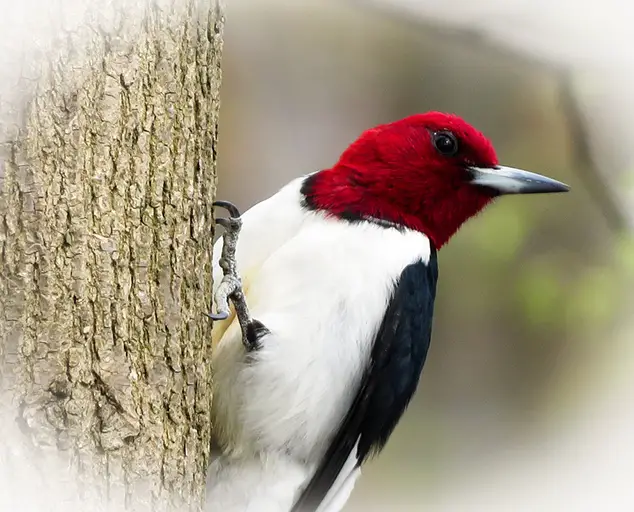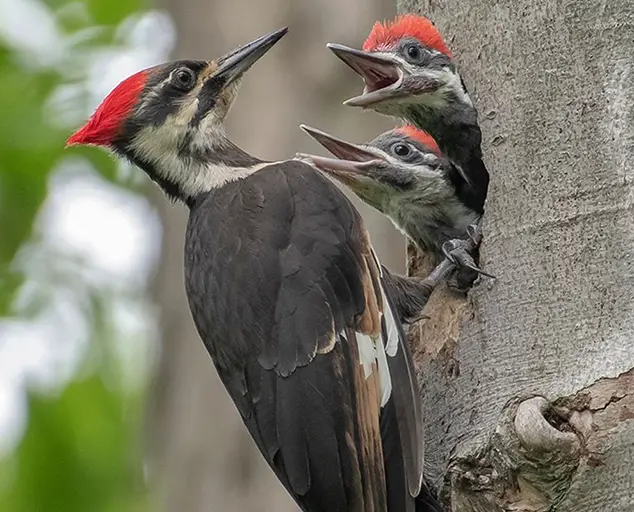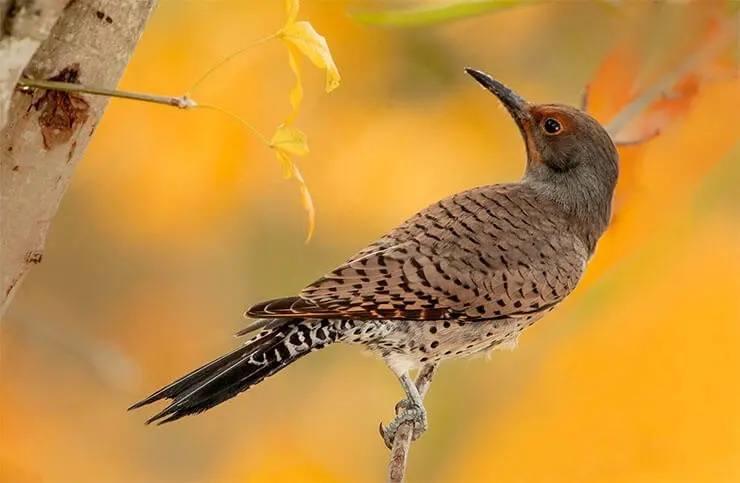You might be surprised to learn that Ohio is home to eight woodpecker species, each with unique characteristics and habits. The state’s diverse landscape, from forests to backyards, provides a habitat for these fascinating birds. As you explore Ohio’s outdoors, you may catch a glimpse of a woodpecker’s distinctive drumming or see its vibrant plumage. But can you tell the difference between a Downy and a Hairy Woodpecker, or know where to look for the elusive Pileated Woodpecker? Understanding the different species of woodpeckers of ohio and their habits can help you make the most of your encounters with these intriguing birds.
Key Takeaways
- Ohio is home to seven year-round woodpecker species, including the Downy, Hairy, and Red-headed Woodpeckers.
- The state’s woodpecker population includes eight species, with distribution varying across different regions.
- Woodpeckers such as the Northern Flicker and Yellow-bellied Sapsucker exhibit seasonal migration patterns in Ohio.
- Regional woodpecker diversity in Ohio is influenced by the state’s geography, with unique mixes found in areas like the Appalachian Mountains.
- The southeastern region of Ohio is home to the Red-headed Woodpecker, which prefers open woodlands and savannas.
Year-Round Woodpecker Species
Ohio is home to seven year-round woodpecker species.
As you observe these birds, you’ll notice unique characteristics in their behavior and habitat preferences. The Downy, Hairy, and Red-headed Woodpeckers are cavity-nesting species, often excavating their own nesting sites in dead trees.
In contrast, the Northern Flicker and Pileated Woodpeckers tend to use existing cavities or create new ones in living trees.
When it comes to foraging, you’ll see different woodpecker species exhibiting distinct behaviors.
The Red-bellied Woodpecker, for example, forages on tree trunks and branches, while the Yellow-bellied Sapsucker feeds on sapwells it creates in trees.
The Northern Flicker, on the other hand, forages on the ground for insects and seeds.
Understanding the habitat preferences of these woodpeckers is essential for effective conservation.
The Pileated Woodpecker, for instance, requires large, mature forests with dead trees, while the Downy Woodpecker can thrive in smaller woodlots and urban areas.
Seasonal Woodpecker Migration

As you expand your knowledge of Ohio’s woodpecker species, you’ll discover that not all woodpeckers are year-round residents.
Some species migrate to and from the state on a seasonal basis. Understanding these migration patterns can help you identify the woodpeckers you encounter.
The Northern Flicker and the Yellow-bellied Sapsucker are two species that exhibit seasonal migration patterns in Ohio.
In the fall, these woodpeckers migrate south to their wintering grounds, often following established flyways. Fall patterns for these species typically occur in September and October, with peak migration periods occurring in late September.
Conversely, in the spring, these woodpeckers migrate north along their established spring routes, typically arriving in Ohio in March and April.
Woodpeckers by Region
Eight woodpecker species can be found in Ohio, and their distribution varies across the state’s different regions.
You’ll notice that woodpecker habitats play a significant role in determining the types of species you’ll encounter in each area. For instance, the southeastern region of Ohio is home to the Red-headed Woodpecker, which prefers open woodlands and savannas.
In contrast, the Northern Flicker is more commonly found in the state’s deciduous forests.
Regional woodpecker diversity is also influenced by the state’s geography.
The Appalachian Mountains in eastern Ohio support a unique mix of woodpecker species, including the Pileated Woodpecker and the Red-bellied Woodpecker.
The western part of the state, which is characterized by flat plains and agricultural land, is home to the Downy Woodpecker and the Hairy Woodpecker.
By understanding the different woodpecker habitats and regional diversity, you can better identify the species you’re likely to encounter in each area of Ohio.
This knowledge will also help you appreciate the state’s rich woodpecker fauna and the various ecosystems that support these birds.
Attracting Woodpeckers to Your Yard
By strategically modifying your yard, you can frequently attract woodpeckers and enjoy their unique behaviors. To achieve this, implement bird friendly landscaping that caters to woodpeckers’ dietary needs. Insects are their primary source of food, and deciduous trees often provide suitable nesting sites. Introducing dead trees (snags) in your yard, or sections with limited canopy to let sunlight reach, promotes beetle growth. Since most woodpeckers use trees for foraging and nesting, incorporate trees like oak, beech, and maple into your yard.
Below are some specific ways to attract woodpeckers:
| Modification | Woodpecker Attraction | Benefits |
|---|---|---|
| Dead trees (snags) | Attracts wood-boring insects | Increased insect prey base |
| Tree cavities or nesting boxes | Provides nesting sites | Reproductive opportunities for woodpeckers |
| Suet feeder placement (east-facing) | Maintains feeder from extreme temperatures | Effective supplement during food scarcity |
| Diversity in trees and undergrowth | Accommodates a wider variety of insect life | Variety in prey items available
Conservation Status in Ohio

Ohio’s woodpecker populations face various conservation challenges, with habitat loss and fragmentation being key concerns.
As you consider the state’s woodpecker conservation status, it’s essential to recognize the impact of human activities on their habitats. Many woodpecker species rely on specific tree species, age classes, and snag densities, which are often compromised by urbanization and forestry practices.
To mitigate these effects, you can support habitat preservation efforts, focusing on maintaining large, contiguous forests with diverse tree species and structures.
This approach can help ensure the long-term viability of woodpecker populations. Additionally, you should be aware of the importance of species monitoring, which involves tracking woodpecker populations, nesting success, and habitat use.
FAQs: Woodpeckers of Ohio
Can Woodpeckers Damage House Siding and Eaves?
When assessing potential damage to your house, you’ll find that woodpeckers can indeed harm siding and eaves by drilling holes and exhibiting specific pecking patterns, which can lead to costly repairs if left unchecked.
Do Woodpeckers Make Good Pets in Ohio?
You’re envisioning a woodpecker as a cuddly companion, but think again – these birds are wild at heart. In reality, their wild habits make them challenging pets, requiring specialized captive care that’s often impossible to replicate.
How Do Woodpeckers Protect Their Brains From Shock?
When you examine the skull structure of birds that repeatedly strike trees, you find unique brain casings that help absorb shock. These casings, along with a spongy skull, work together to distribute force and protect the brain.
Can I Feed Woodpeckers Suet in the Summer?
You’re considering offering suet to woodpeckers in summer. A case study in New England shows that woodpeckers prioritize summer nutrition from insects. You can provide suet alternatives like mealworms or fruit to supplement their diet.
Are Woodpeckers Known to Carry Diseases in Ohio?
You’re aware that woodpeckers, like other birds, can carry avian pathogens, but it’s essential to note that their woodpecker hygiene, including frequent preening and molting, helps reduce disease transmission, minimizing the risk in Ohio.
Conclusion
You’ve now familiarized yourself with the eight woodpecker species found in Ohio, understanding their habits, habitats, and unique characteristics. By identifying the types of woodpeckers that inhabit different regions of the state, you’re one step closer to supporting these amazing creatures. What can you do to protect the habitats and populations of Ohio’s woodpeckers for future generations to enjoy? Consider incorporating conservation-friendly practices in your yard to contribute to the state’s biodiversity.













